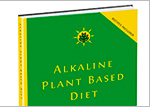5 to 1 Rule Guide To Know If Your Food Contains Enough Fiber

A good rule of thumb is the ingredients in your food or on your food label should state “whole” and should contain 1 gram of fiber to every 5 grams of carbohydrate. “Whole” is the first important criteria because the fiber in food needs to be in its natural state and not be fiber isolates or extracts.
Studies show that the natural fiber in food is protective against bowel disease, colon cancer, diabetes, and heart disease, and fiber isolates or extracts is not.[1] Fiber doesn’t act alone and contains phytonutrients that are bound to it, and nutrients that are packaged with it. They all interact with synergy to provide their combined health protecting benefits.
Ideally you need consume your fiber as part of whole fruits, vegetables, legumes, nuts, seeds, and whole grains. If you eat processed foods, like packaged breakfast cereals, they should be minimally processed to avoid toxic additives and preservatives and destroying the food’s nutrients.
The next rule of thumb is the foods you consume should have a carbohydrate to fiber ratio that is 5 to 1. A ratio of 5 to 1 or less optimally supports health and reduces the risk of chronic diseases.
Dr. Greger gives an example using whole wheat Wonder Bread. It passes the first test, having “whole” listed in the ingredients, but it doesn’t pass the 5 to 1 rule of thumb. The bread contained 20g of carbohydrates and 2.7g of fiber. Divide 20 by 2.7 and you end up with around 7 which is more than 5, so it failed the test.
The Ezekiel bread did better. It contains 15g of carbohydrates and 3g of fiber. 15 divided by 3 equals 5, so it passed the test. Though is passed the test it is still better to get your fiber from whole foods.
125g of apples with skins contains 13g of sugar carbohydrates and 3g of fiber. 13 divided by 3 is around 4, to its passed with a 4 to 1 ratio.
The closer you come to eating a whole food plant-based diet the less chance you will have of not eating enough fiber, while avoiding toxic additives and preservatives.
[1] D E Threapleton, D C Greenwood, C E L Evans, C L Cleghorn, and more. Dietary fibre intake and risk of cardiovascular disease: systematic review and meta-analysis. BMJ 2013; 347.






